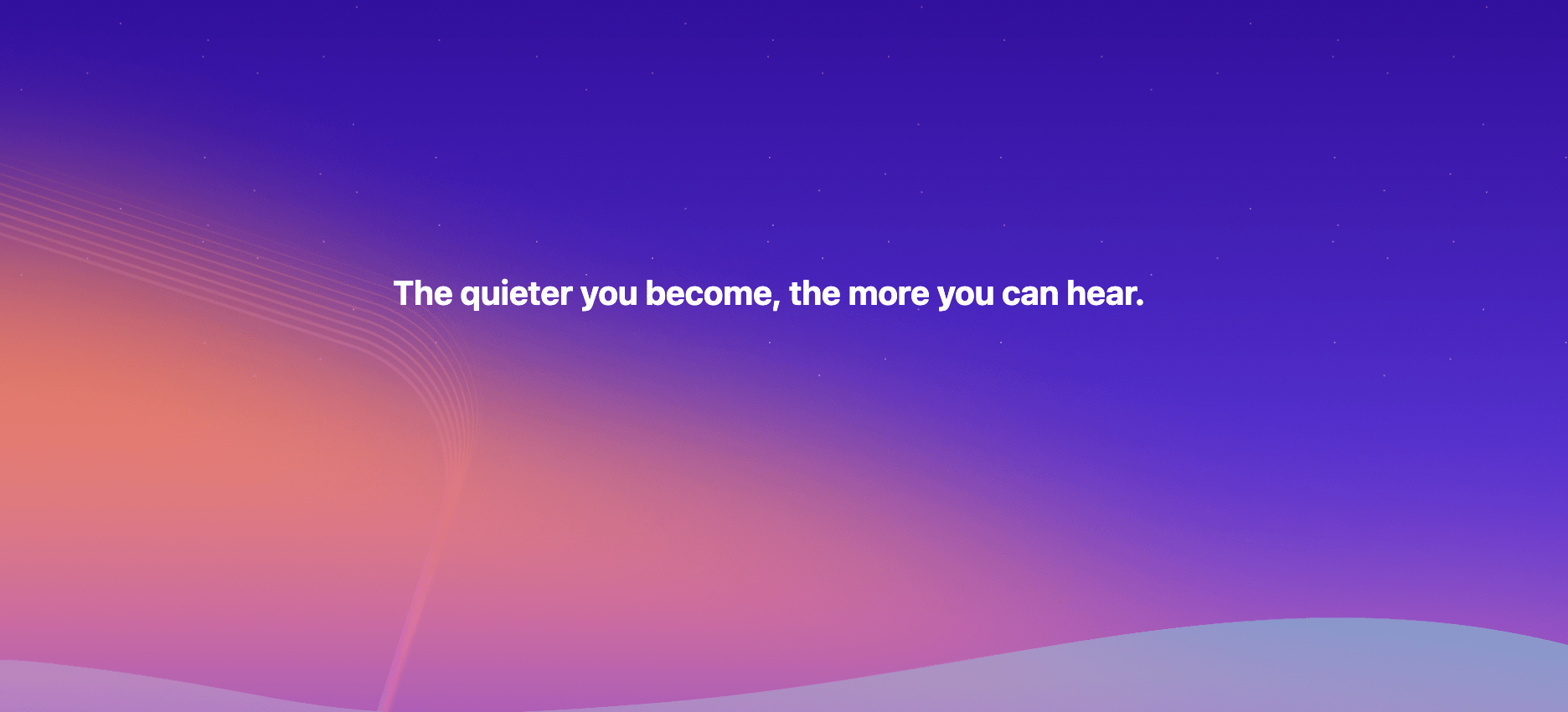Fetch Data from an API
Add to favorites
Learn the basics of asynchronous functions and promises by fetching data from an API using fetch, useEffect and useState
React Hooks Handbook
1
Intro to React Hooks
3:39
2
Create your first React app
4:23
3
React Component
2:54
4
Styling in React
5:06
5
Styles and Props
2:22
6
Understanding Hooks
3:21
7
useState Hook
2:54
8
useEffect Hook
3:41
9
useRef Hook
3:00
10
Props
3:11
11
Conditional Rendering
4:21
12
Load Local Data
4:04
13
Fetch Data from an API
5:40
14
Toggle a state
4:05
15
useInput Hook
6:04
16
Gatsby and React
6:44
17
NextJS and React
5:24
18
React TypeScript Part 1
8:19
19
React TypeScript Part 2
7:35
20
useScrollPosition Hook
4:26
21
useOnScreen hook
8:08
22
useContext Hook
8:32
23
Fragments
2:43
24
Lazy Loading
4:05
25
React Suspense
3:13
26
Environment Variables
4:43
27
Reach Router
5:31
28
URL Params
4:04
29
SEO and Metadata
6:47
30
Favicon
3:03
31
Dynamic Favicon
2:14
32
PropTypes
3:54
33
Custom PropTypes
3:58
34
useMemo Hook
4:05
35
forwardRef Hook
3:28
36
Handling Events
5:44
37
Spread attributes
3:35
38
useMousePosition Hook
4:55
39
useReducer with useContext Part 1
7:33
40
useReducer with useContext Part 2
6:48
41
useReducer with useContext Part 3
5:43
42
Netlify
5:08
43
Gatsby Cloud
6:19
44
Gatsby Plugin Image
8:11
45
useOnClickOutside Hook
6:32
46
useWindowSize Hook
4:14
47
usePageBottom hook
4:48
48
useLocalStorage Hook
5:27
49
Three.js in React Part 1
17:33
50
Three.js in React Part 2
11:18
CodeSandbox link
You can find the full code for this tutorial at https://codesandbox.io/s/fetch-data-from-an-api-hko1m.
Import useEffect
Import useEffect at the top of your file.
import React, { useEffect } from "react"Then, define your useEffect hook inside of your component.
import React, { useEffect } from "react";
const App = () => {
useEffect(() => {
}, []);
return <div></div>;
};
export default App;Learn more about the useEffect hook and the component lifecycle in the useEffect section of this handbook.
Define your URL
When the user lands on our page, we want to call the API. In other words, we want to call the API during the mounting part of the component's lifecycle.
The API url to get a random advice we want to call is https://api.adviceslip.com/advice. Let's save it in a variable inside of the useEffect hook.
useEffect(() => {
const url = "https://api.adviceslip.com/advice"
}, []);Create the asynchronous function
Then, let's create an asynchronous function to fetch our data. An asynchronous function is a function that needs to wait after the promise is resolved before continuing. In our case, the function will need to wait after the data is fetched (our promise) before continuing.
const fetchData = async () => {
try {
const response = await fetch(url);
const json = await response.json();
console.log(json);
} catch (error) {
console.log("error", error);
}
};Put the fetchData function above in the useEffect hook and call it, like so:
useEffect(() => {
const url = "https://api.adviceslip.com/advice";
const fetchData = async () => {
try {
const response = await fetch(url);
const json = await response.json();
console.log(json);
} catch (error) {
console.log("error", error);
}
};
fetchData();
}, []);The function we just created is wrapped in a try...catch statement so that the function catches the errors and prints them in the console. This helps debug and prevents the app to crash unexpectedly.
Inside of the try, we are using the built-in fetch API from JavaScript to get the advice from the Advice Slip JSON API. We put the await keyword just in front of it to tell the function to wait for the fetch task to be done before running the next line of code.
Once we get a response, we are parsing it using the .json() function, meaning that we are transforming the response into JSON data that we can easily read. Then, we are printing the JSON data in the console.

Get the advice string
As we can see in the console, we got an advice slip from the API. We only need the advice, and not the id, so let's just print the advice itself:
console.log(json.slip.advice);
Save the advice in a local state
Now that we got the actual advice string, we can save it into a local state using the useState hook. Learn more about the useState hook in the useState hook section of this handbook.
Let's import useState and define it.
import React, { useEffect, useState } from "react"const [advice, setAdvice] = useState("")Then, instead of printing the advice in the console, we'll save it in the advice state.
setAdvice(json.slip.advice)Display the advice
To display the advice, simply call the advice state in your return body:
return (
<div>
<p>{advice}</p>
</div>
);
Final code with styling
The final code, along with styling the text using styled-components, will look like so:
import React, { useEffect, useState } from "react";
import styled from "styled-components";
const App = () => {
const [advice, setAdvice] = useState("");
useEffect(() => {
const url = "https://api.adviceslip.com/advice";
const fetchData = async () => {
try {
const response = await fetch(url);
const json = await response.json();
console.log(json.slip.advice);
setAdvice(json.slip.advice);
} catch (error) {
console.log("error", error);
}
};
fetchData();
}, []);
return (
<Wrapper>
<Paragraph>{advice}</Paragraph>
</Wrapper>
);
};
export default App;
const Wrapper = styled.div`
padding-top: 150px;
margin: 0 auto;
`;
const Paragraph = styled.h2`
font-family: -apple-system, BlinkMacSystemFont, "Segoe UI", Roboto, Oxygen, Ubuntu, Cantarell, "Open Sans", "Helvetica Neue", sans-serif;
font-style: normal;
font-weight: bold;
font-size: 20px;
line-height: 48px;
text-align: center;
`;Learn with videos and source files. Available to Pro subscribers only.
Purchase includes access to 50+ courses, 320+ premium tutorials, 300+ hours of videos, source files and certificates.
Templates and source code
Download source files
Download the videos and assets to refer and learn offline without interuption.
Design template
Source code for all sections
Video files, ePub and subtitles
Videos
ePub
Assets
Subtitles
1
Intro to React Hooks
An overview of React Hooks and the frameworks you can use to build your React application blazingly fast
3:39
2
Create your first React app
Create your first React project from the Terminal and save it on your local computer
4:23
3
React Component
Create your first JSX component using React
2:54
4
Styling in React
How to style your React components using inline styling, separate stylesheets or styled-components
5:06
5
Styles and Props
Render different styles depending on different properties passed to your component
2:22
6
Understanding Hooks
Learn about the basics of React Hooks, which introduced at React Conf 2018
3:21
7
useState Hook
Use the useState hook to manage local state in your React component
2:54
8
useEffect Hook
Manage with your component's lifecycle with the useEffect hook
3:41
9
useRef Hook
Learn about the useRef hook, which replaces the JavaScript getElementById way
3:00
10
Props
Learn about props in React to pass data from parent to child components
3:11
11
Conditional Rendering
Render different UIs depending on different conditions and states
4:21
12
Load Local Data
Load local JSON data into your React application
4:04
13
Fetch Data from an API
Learn the basics of asynchronous functions and promises by fetching data from an API using fetch, useEffect and useState
5:40
14
Toggle a state
Learn how to toggle a state from true to false and back again
4:05
15
useInput Hook
Create a hook to get the value and the onChange event of input fields
6:04
16
Gatsby and React
Create a static content-oriented website using React on Gatsby
6:44
17
NextJS and React
Create your first NextJS React application
5:24
18
React TypeScript Part 1
Learn how to create a React TypeScript application using the Create React App, Gatsby and NextJS methods
8:19
19
React TypeScript Part 2
Learn the basics of TypeScript and how to use TypeScript in a React component
7:35
20
useScrollPosition Hook
Create a custom hook to listen to the current window position of the user
4:26
21
useOnScreen hook
Create a custom hook to listen to when an element is visible on screen
8:08
22
useContext Hook
Manage global states throughout the entire application
8:32
23
Fragments
Group multiple children together with React Fragments
2:43
24
Lazy Loading
Lazy Load heavy components to improve performance
4:05
25
React Suspense
Wait for data with React Suspense and React.lazy
3:13
26
Environment Variables
Make environment variables secret with a .env file
4:43
27
Reach Router
Create a multiple-pages React application with Reach Router
5:31
28
URL Params
Create unique URL with URL Params
4:04
29
SEO and Metadata
Optimize a React application for search engines with React Helmet
6:47
30
Favicon
Add an icon to a React website
3:03
31
Dynamic Favicon
Change the favicon's fill color depending on the user's system appearance
2:14
32
PropTypes
Implement props type-checking with PropTypes
3:54
33
Custom PropTypes
Create a custom PropType using a validator function
3:58
34
useMemo Hook
Prevent unnecessary re-renders when the component stays the same
4:05
35
forwardRef Hook
Forward a ref to a child component
3:28
36
Handling Events
How to handle events in React
5:44
37
Spread attributes
Learn how to make use of the spread operator
3:35
38
useMousePosition Hook
Detect the user's mouse position on a bound element
4:55
39
useReducer with useContext Part 1
Create a reducer to be used in a context
7:33
40
useReducer with useContext Part 2
Incorporate useReducer with useContext
6:48
41
useReducer with useContext Part 3
Connect the context and reducer with the frontend
5:43
42
Netlify
Deploy to production using Netlify
5:08
43
Gatsby Cloud
Deploy to production using Gatsby Cloud
6:19
44
Gatsby Plugin Image
Use gatsby-plugin-image for automatic image resizing, formatting, and higher performance
8:11
45
useOnClickOutside Hook
Toggle a modal visibility with a useOnClickOutside hook
6:32
46
useWindowSize Hook
Create a hook to determine the width and height of the window
4:14
47
usePageBottom hook
Detect if the user scrolled to the bottom of the page
4:48
48
useLocalStorage Hook
Store an item in a browser's local storage
5:27
49
Three.js in React Part 1
Bring your website to life with beautiful 3D objects
17:33
50
Three.js in React Part 2
Bring your website to life with beautiful 3D objects
11:18
Meet the instructor
We all try to be consistent with our way of teaching step-by-step, providing source files and prioritizing design in our courses.
Stephanie Diep
iOS and Web developer
Developing web and mobile applications while learning new techniques everyday
7 courses - 36 hours

Build Quick Apps with SwiftUI
Apply your Swift and SwiftUI knowledge by building real, quick and various applications from scratch
11 hrs

Advanced React Hooks Handbook
An extensive series of tutorials covering advanced topics related to React hooks, with a main focus on backend and logic to take your React skills to the next level
3 hrs

SwiftUI Concurrency
Concurrency, swipe actions, search feature, AttributedStrings and accessibility were concepts discussed at WWDC21. This course explores all these topics, in addition to data hosting in Contentful and data fetching using Apollo GraphQL
3 hrs

SwiftUI Combine and Data
Learn about Combine, the MVVM architecture, data, notifications and performance hands-on by creating a beautiful SwiftUI application
3 hrs

SwiftUI Advanced Handbook
An extensive series of tutorials covering advanced topics related to SwiftUI, with a main focus on backend and logic to take your SwiftUI skills to the next level
4 hrs

React Hooks Handbook
An exhaustive catalog of React tutorials covering hooks, styling and some more advanced topics
5 hrs

SwiftUI Handbook
A comprehensive series of tutorials covering Xcode, SwiftUI and all the layout and development techniques
7 hrs
